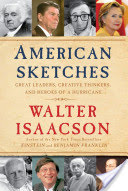 About ten years ago Cliff Arnall, a British scientist, reportedly created a calculation to determine “the most depressing day of the year.” The equation includes seven variables: (W) weather, (D) debt, (d) monthly salary, (T) time since Christmas, (Q) time since last failed attempt, (M) low motivational levels and (NA) the need to take action.
About ten years ago Cliff Arnall, a British scientist, reportedly created a calculation to determine “the most depressing day of the year.” The equation includes seven variables: (W) weather, (D) debt, (d) monthly salary, (T) time since Christmas, (Q) time since last failed attempt, (M) low motivational levels and (NA) the need to take action.
Since then, it has generally been determined that the last Monday in January qualifies as the worst/most depressing day of the year. Over time it has come to be known as Blue Monday.
Not all scientists are impressed with the calculation, and yes, there is a Wikipedia entry to give you all of the history and background.
Whether you think it science or shenanigans – I think it is silly.
I share this not because I agree with the science, or to give you a license to feel badly, walk around moping or looking like we just ate a lemon today.
Rather I offer it as a challenge to you and your team (if you are a leader).
This is our chance to make Blue Monday something far better. When you look at the factors in the equations, you could see where all of them could impact someone’s mental state – but none of them have to.
Here is my challenge to you.
Make it a great day. Make it a day where your heart and mind and spirit soar.
If the weather is gray and foggy, so what? Are you going to let water droplets influence your day?
If you have already backslid on your New Year’s Resolution, that trend can be reversed… starting today.
If you have more bills than you wish you did, don’t spend any money today.
But beyond the formula, you can take actions that will insure (yes, I mean insure) that you will have a better day, and certainly not have your worst day of the year.
Here is a short list to get you started.
- When you see someone smile, smile back.
- When you are in your car, let the person merge.
- When you think someone is being mean, look for a different explanation (or consider benign intent – learn what I mean here).
- When you feel blue, think yellow (or any color that makes you happy).
- Read a book you love.
- Watch something that makes you laugh.
- Call someone you miss, “just because.”
- Thank a co-worker for something you appreciate in their work.
- Serve your Customers with cheer, knowing you can positively influence their day by your interaction.
While I could type all day, you get the picture.
What am I really saying?
Make a choice.
Make a choice to create a great day today.
Make a choice to make January 26 (or whatever day you are reading this) your best day of the year so far.
It is off to a good start.
Use today as a test case for yourself. After all, if you can make it a great day on the “most depressing day of the year”, you can do it anytime.
A final note for leaders (and parents) . . .
As a leader of others, the choices you make will impact others and their attitude and mental state more than you realize. When you make the conscious choice to do things like I have suggested, you are dropping a pebble in the pond – your actions will change your day, and your example will influence others. Yes, you could share this message with your team either by forwarding this to them (which I would love) or talking about it; but if you live it, it will have even more impact.
My point? When you do these things, more people will benefit than yourself, so go for it!
And if you are looking to build your leadership skills in many other ways, consider joining us for a Bud to Boss or Remarkable Leadership Workshop.








